Putting Michael Burry's Short Bet Into Institutional Context


Many investors would be aware of the name “Michael Burry”. An eccentric doctor-turned-trader, Michael Burry, shot to fame after correctly predicting the 2008 subprime mortgage crisis that triggered the Great Recession. His decision to short the subprime market made him and his investors around $100 million and $700 million in profits, respectively. He was made even more famous after being featured in Michael Lewis’ book “The Big Short”, which was then adapted into a blockbuster Hollywood movie with Christian Bale assaying his character. Since then, he’s become an online celebrity of sorts, prone to post (and then scrub) extremely terse comments on Twitter under the username “Cassandra B.C.”. The username is itself a reference to the Apollo-worshipping Trojan priestess from Greek mythology, fated to utter true prophecies but never to be believed. As an investor renowned for making short bets, this appellation might even be considered rather apropos.
Securities filing from earlier this week showed that Dr. Burry has held put options against instruments tracking the S&P 500 and Nasdaq-100 indices, worth a combined $1.6 billion at the end of the second quarter. However, what news media have often failed to report is that this is the value of the underlying and not the amount spent on buying said options. Dr. Burry’s investment management firm, Scion Asset Management, had a little under $238 million in assets under management (AUM) as of the end of Q1 2023.
Furthermore, unlike the Trojan priestess, not every one of Dr. Burry’s predictions have held true.
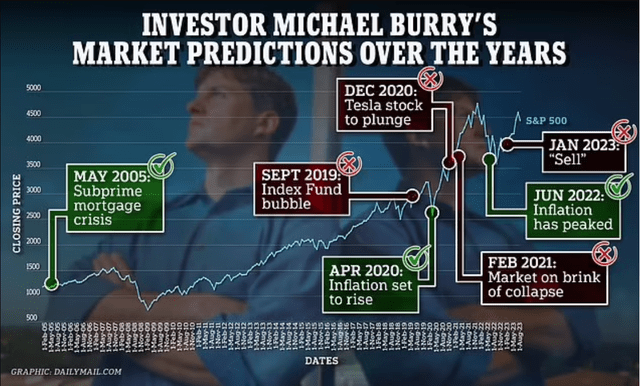
Source: Daily Mail
His most recent major prophecy involved a simple statement of “Sell” made via Twitter in January this year, which didn’t hold true. Dr. Burry later withdrew this tweet. This time, however, his Twitter (now “X”) account is shuttered and the actual act of “skin in the game” was revealed via filings.
There is, of course, some rationale behind Dr. Burry’s decision to be bearish. Several articles in the Year to Date (YTD) have highlighted the fact that all is not well in the global macroeconomic outlook for most of the Developed Market economies, where fundamentals have been rather muddled. Nowhere is this truer than in the U.S. As per a report released by Bank of America a little before Dr. Burry’s filings were made known, the United States government is poised to accrue debt at a rate of a staggering $5.2 billion a day for the next 10 years.
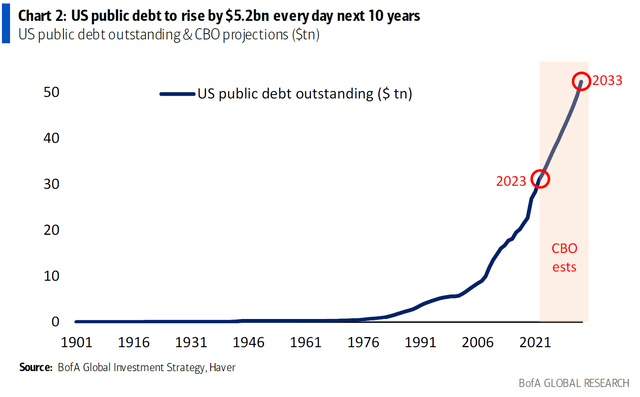
Source: Bank of America
The relative tightness and overdependence on US debt can also be indirectly assessed by US crude oil reserves, including the Strategic Petroleum Reserve, are at lows not seen since 1985 and are even lower after the massive selloff executed in 2021-2022.
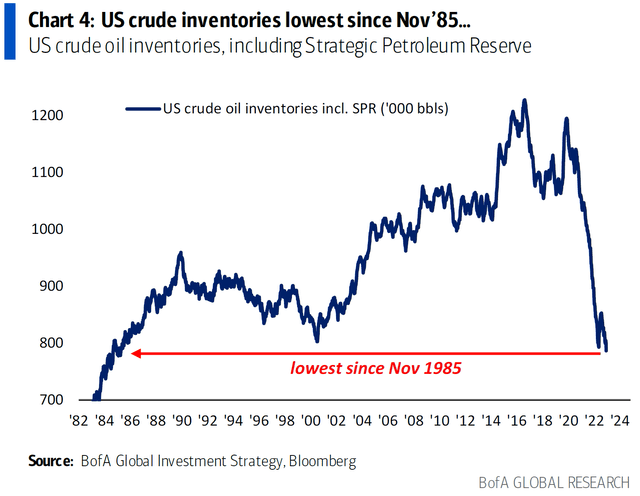
Source: Bank of America
With the U.S. Federal Reserve intent on hiking rates, this means that the US government’s share of debt being issued to pay past debt will likely continue to grow. US 30-Year Treasury debt is trading in a “Goldilocks” range, signaling a turnaround to increasing attractiveness relative to US equity markets.
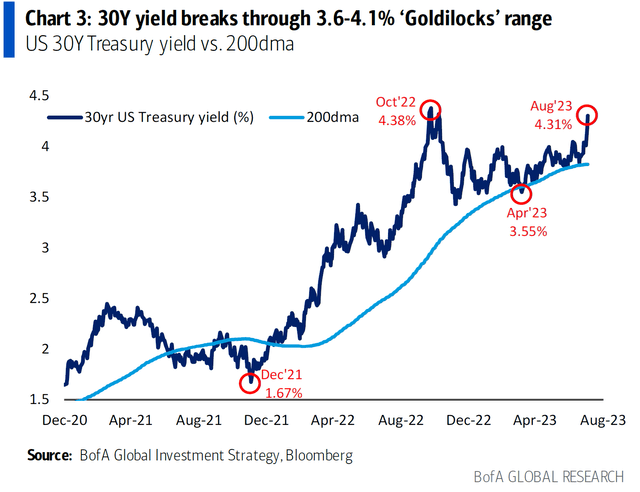
Source: Bank of America
Unsurprisingly, Fitch had downgraded the US in early August citing a steady deterioration in standards of governance over the last 20 years, including on fiscal and debt matters. On the 15th, Fitch also warned it might have to downgrade a slew of US banks, including giants like JPMorgan. This was to be expected, given that Moody’s had slashed credit ratings on 10 US banks and 11 other lenders at around the same time.
This has consequences in the private market space as well. “Insurtech” startups and ventures, which had traditionally been highly valued, are estimated to be at 5-year lows with respect to funding as well as a general drop in volumes. “Insurtech” Mergers & Acquisition (M&A) exits have grown 45% Quarter-on-Quarter, almost completely reversing a recent slowdown.
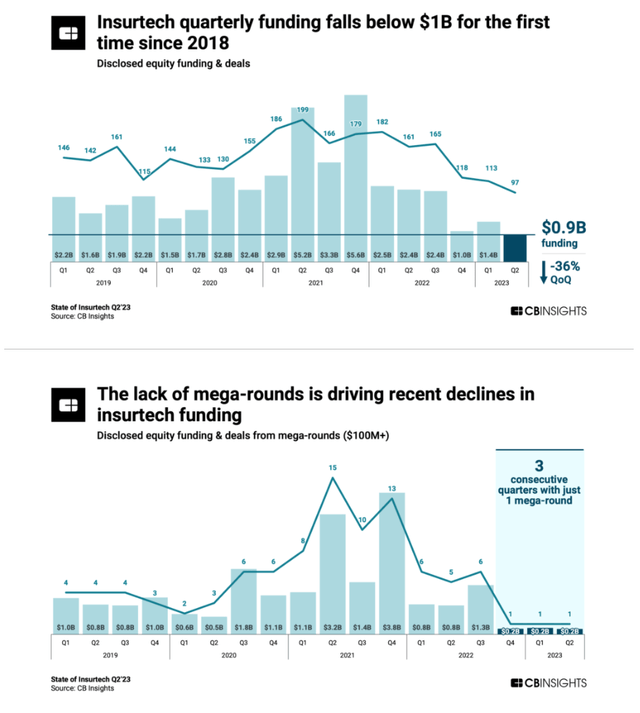
Source: CB Insights
Investors have been shoring up their investments in privately-held growth companies; with early figures at H1 already well past those for the entirety of 2022.
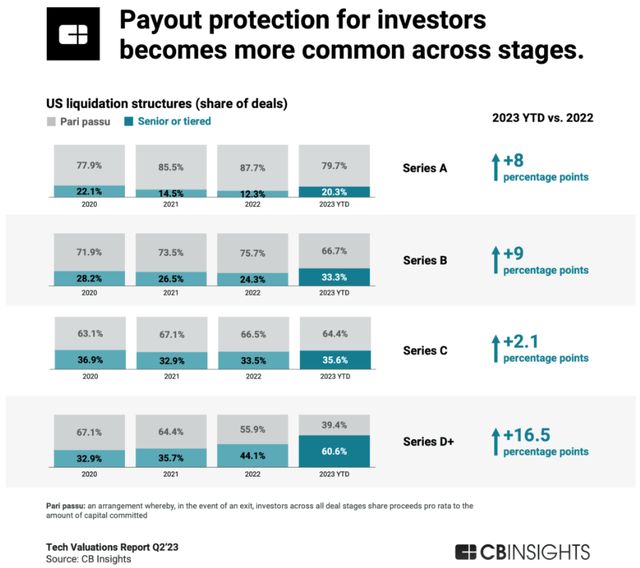
Source: CB Insights
Despite this, Bank of America reports that tech inflows into the tech sector have been seen an increase in the past couple of weeks, despite a general downturn in valuations.
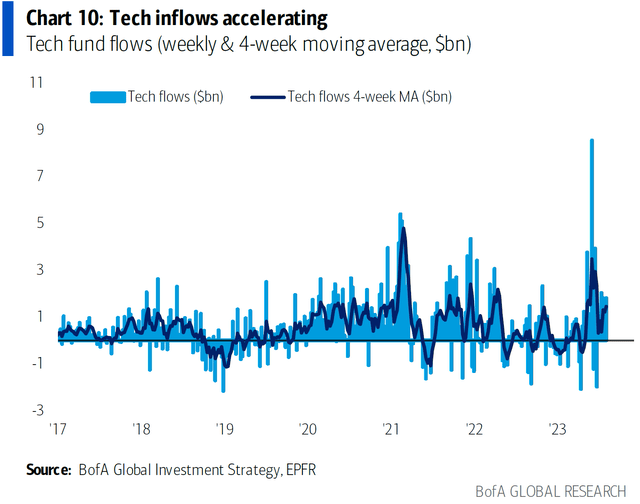
Source: Bank of America
This could be considered to be more along the lines of a “flight to safety” towards large- and mega-cap tech companies who are deemed as being more “survivable” on account of their liquidity. This assertion is borne out by the fact that tech valuations have been declining in the private markets, especially in later-stage investment rounds.
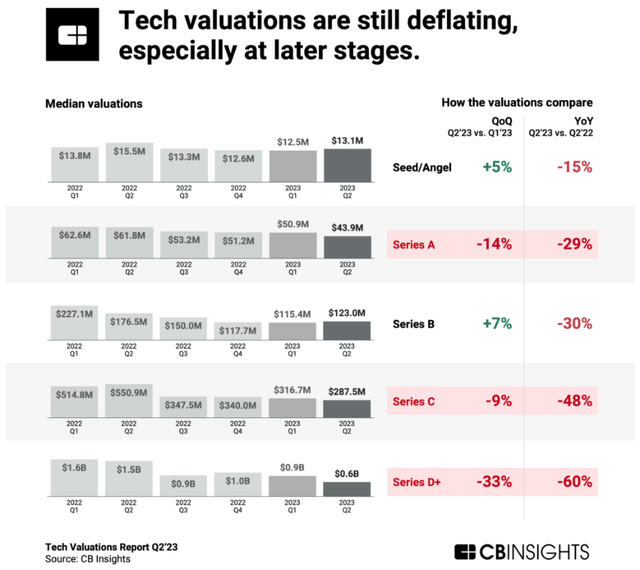
Source: CB Insights
In the CB Insights tech valuation landscape for Q2, the standout facts that remain are:
- Median tech valuations dropped again quarter-over-quarter (QoQ) for Series A (-14%), Series C (-9%), and Series D+ (-33%) startups.
- The later the stage, the sharper the valuation decline year-over-year (YoY) in Q2’23. While the median valuation for seed/angel and Series A rounds fell 15% and 29% YoY, respectively, Series B to Series D+ valuations tumbled between 30% and 60%.
- Deals negotiated with seniority or tiered liquidation structures gained share across every stage from Series A to Series D+ in H1’23.
- Over half (60.6%) of Series D+ deals had seniority or tiered liquidation structures in H1’23.
- Source: CB Insights Tech Valuations Q2’23 Report
Juxtaposing the two scenarios together brings out a worrying picture: “Big Tech” is expected to be bigger, with very few newcomers (if any) foreseen as being capable of accruing value by outright competition.
Overall, flows into Emerging Markets (EM) equities have been outstripping flows into Developed Markets (DM) economies. The biggest beneficiaries to this have been, of course, Chinese and Indian equities.
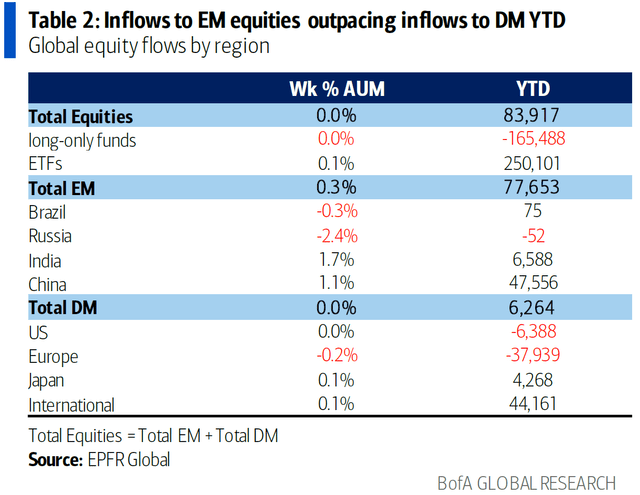
Source: Bank of America
However, it bears noting that the flows into Chinese equities are essentially making up for outflows seen during 2022 as geopolitical tensions were ratcheting. The rise in flows towards Indian equities, however, is a new development. Traditionally, a small number of foreign investors have remained resolute in managing their holdings: these new inflows signify growing attention.
Among markets and strategies, European equities and long-only funds come out the worse for wear so far. The latter highlights the adoption of a tactical mindset among institutional investors by cashing in on dip/rise situations. Rising rates have also made bank loans and government bonds increasingly attractive for said investors. The outsized shift away from commodities, in the meantime, is yet another factor indicating that recessionary pressures aren’t off the table. In a recessionary outlook, consumption is expected to dip. Therefore, the commodities outlook turns bearish.
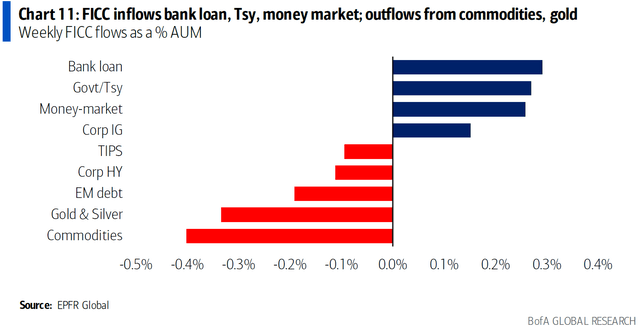
Source: Bank of America
All in all, Bank of America – unlike Dr. Burry – concludes on a “Neutral” signal on its “Bulls & Bears Indicator”, which is an accurate assessment of the state of markets. Tech narratives continue to be shaky, and the consumption outlook will continue to decline (as evidenced by the reports from Disney and Target, among others), while sector rotation is bound to continue to smooth out market concentration, and Emerging Markets — led by India and China — will continue to garner interest. As earnings releases continue, it’s important not to get too caught up in the hype.
The rising utilization of tactical trading instruments such as leveraged products by institutional investors to cash in on tactical opportunities and firm up balance sheets should also be borne in mind in the weeks and quarters to come.


